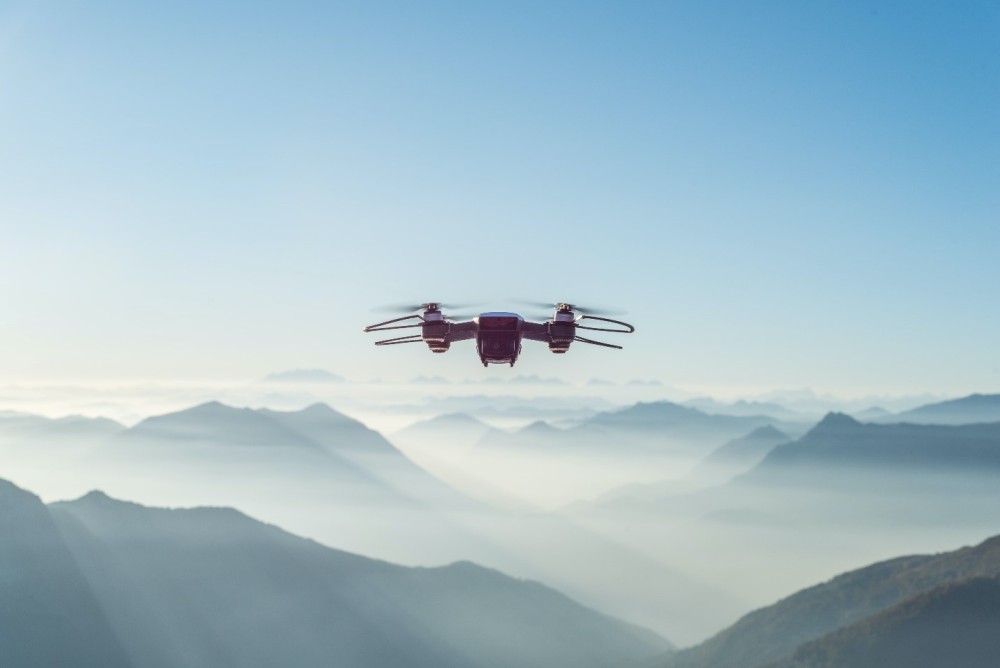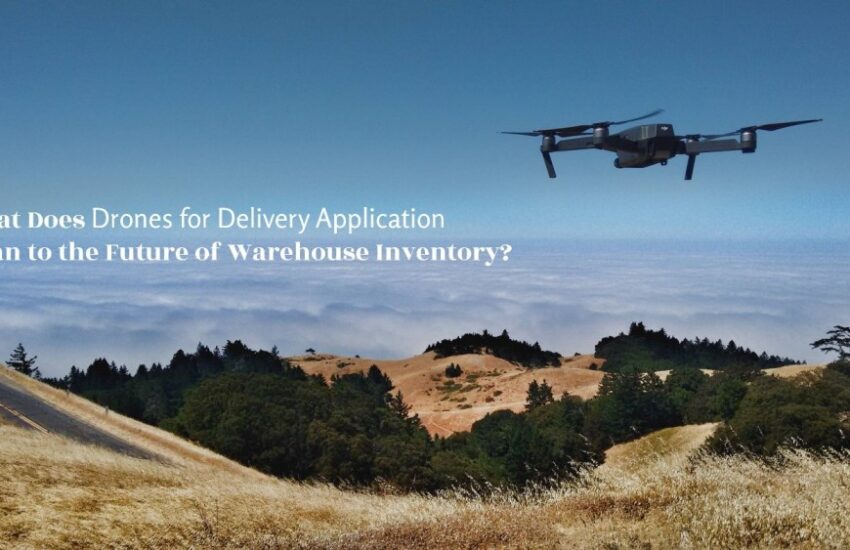For the past two decades, the expansion of e-commerce has resulted in massive warehouses worldwide. Inventory management in such vast facilities takes a lot of time and effort.
Commercial warehouses and inventory need drones for fully autonomous drones in the future. Drones for delivery can provide financial and safety benefits and innovative inventory management. An annual inventory in warehouse management can include shutting down a portion of operations, but deploying drones could change that.
Drones in supply chains can assist in optimizing organization and counting. UAVs are now changing the future of commerce and warehousing.
Warehouse Management with Drones for Delivery
Inventories in warehouses are usually tedious. Warehouse management takes time and effort. Drones might relieve staff of a laborious list and audit, allowing the warehouse to run regularly during annual inventory.
Drones for delivery as a mainstream practice are still years away. Most existing drones’ range would limit them to delivery to consumers who live near a warehouse. There are also legal hurdles to overcome.
Businesses already use drones to help with product deliveries in less evident methods. In large and small enterprises’ warehouses, drones for warehouse management now rapidly change tracking and shipment.
Five Advantages of Utilizing Drones for Warehouse Inventory Management
Drones have the most potential for warehouse inventory management. Workers who walk or drive to a specific area in the warehouse can use drone warehouse inventory at the site.
With drones, workers can scan barcodes and schedule physical inventory counting. Drones provide advantages when it comes to inventory management:
#1 Inventory Audits on a More Regular Basis
Drones for warehouse management have great speed and productivity. With drones, inventory audits and cycle counts are done more frequently than manual labor. UAVs can accomplish accurate inventory and cycle counting regularly, increasing visibility and trackability of any errors.
#2 Remote Piloting and Improved Worker Safety
Drone operators will be able to pilot and control the drone from afar or within range. As a result, no one is working in the warehouse region. Drones lead to less-congested work aisles, allowing for the safe movement of handling equipment.
#3 Productivity Increases
Warehouse UAVs can read barcodes and RFID labels from several feet. Drones in warehouse management can easily manage inventories by flying up and down the facility’s aisles. These drones can also readily access commodities stored in high-bay racks that are out of sight of the controllers.
#4 Enhanced Inventory Control and Dependability
Warehouse drones eliminate the need for personnel to manually take inventory from time to time. It’s inevitable and normal for workers to make mistakes.
The drone technology capabilities assist in analyzing inaccuracies in the system, such as unreadable labels or unregistered products. Errors may frequently occur if there’s no dependable system. Integrating drones for warehouse solutions makes inventory control more reliable and accurate.
#5 Cost-Effective Solutions
Drones in warehouse management save time and money, allowing operators to focus on other logistics tasks. The cost of annual or periodic inventory is higher than it appears. Staff members need to focus on practical solutions.
A Few Disadvantages of Warehouse Drones

Drone technology isn’t perfect, and it’s still improving. Delivery drones in warehousing still need to develop their features to better user experience and performance.
Here are a few of drone draw drawbacks:
High Start-Up Costs
Some drones for warehouse management are pretty pricy, especially those with more complex features. Perhaps when drone technology advances, supply will increase while prices decrease.
Better Visibility
Merchandises must be labeled correctly. Tags should be attached to the pallets outside, large enough for the drone to read. If tags are blurred or misplaced, there could be a mix up.
Disruption of Other Facility Activities
It’s preferable to make inventories when there’s no activity in the warehouse. After work hours, such as nighttime or weekends, maintain facility productivity, and avoid drone mishaps.
Why Is Inventory Audit with Drones Valuable in Warehousing?
Online shopping has risen over the past few years. Natural resources need to be supplied worldwide due to supply and demand. Drones for delivery offered an alternative transport to keep customers satisfied.
Drone delivery appears to be the best solution for many of these problems. Let’s look at three of the ways drones are helping to solve supply chain issues:
Improved Warehouse Productivity
Warehouses are exceedingly difficult to understand. It’s a dizzying party with the endless low-hum of conveyor belts whisking goods worldwide.
Drones for warehouses provide constant surveillance to guarantee safety incidents swiftly address these issues. Inventory audit with drones keeps operations running smoothly and increases personnel safety.
Controlling Inventory in The Supply Chain
Keeping track of on-hand inventory is a time-consuming and expensive task. Technology is revolutionizing inventory control by drones paired with Radio Frequency ID (RFID) tags. A drone warehouse inventory flies around the warehouse and offers faster audits and cycle counting.
Transportation of Supply Chain in the Last Mile
The end of the logistics route for merchandise arriving at its final destination is called the last mile. Drones for delivery appear to be the best solution for logistics. UAVs have successfully delivered food, small goods, and even human organs in several test run.
Types of Drones in Inventory Management
Large enterprises such as Google and Amazon started testing drones’ delivery to customers. Other businesses currently implement drones in warehouse management.
There are two ways to control warehouse drones:
- Remote Control – An operator controls the drone with an integrated app.
- Flight Path Automatically – The drone relies on its sensors or a predetermined flight plan.
Drones utilize stabilized cameras to record data from each unit loads tags to keep track of stocks. Drones can read both barcodes and RFID tags. The RFID system is more advanced, allowing drone warehouse inventory to recognize merchandise on both sides of an aisle.
Drones: Changing Warehousing and Logistics
Warehouse drones can do the following:
- Inventory audits
- Cycle counting
- Item searches
- Stocktaking
- Item transferring
- Item tracking
Inventory counting is a time-consuming, labor-intensive, expensive, repetitive, and dangerous form of inventory counting since individuals must work at heights. Drones can help to improve this procedure.
Drones can assist in the search for that particular item. With software integration, ZenaDrone drones for delivery can swiftly scan barcodes on boxes and discover the searched item.
